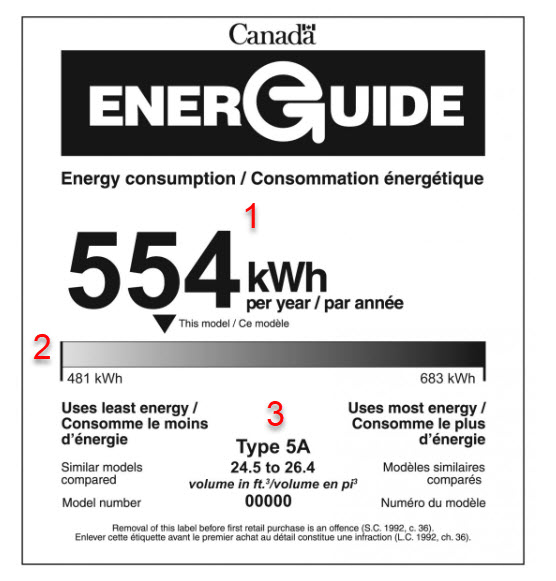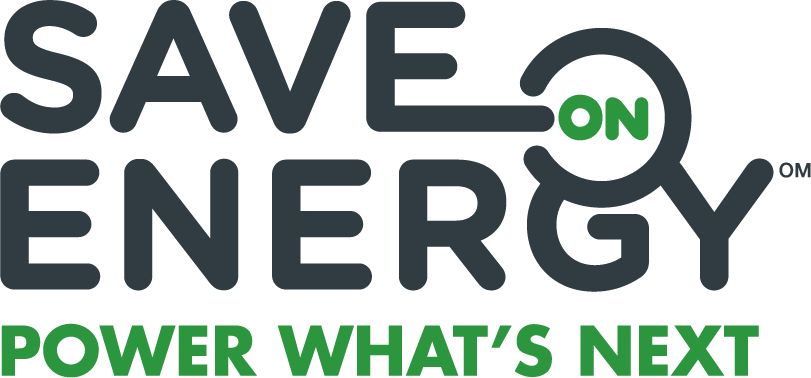By being aware of your energy consumption and taking a few simple actions, you can save money on your GrandBridge Energy electricity bill. The most minor efforts can have the most significant impact.
Track Your Energy Savings
Did you know you can track your energy-saving measures through your My Account portal and see how your changes translate to savings?
Electricity usage can change substantially in the summer if you use an air conditioner / central air system or heat pump to cool your home or in the winter if your home is electrically heated (baseboard heaters, in-floor heating, heat pumps). Here are some ways to reduce energy consumption and save costs.
- Optimal temperature settings: Set your air conditioner to 25°C when home and 28°C when away during summer. Turn it off if you are away for an extended period.
- Avoid heat-producing appliances near thermostats: Keep lamps, TVs, and other appliances away from thermostats to prevent your cooling system from working overtime.
- Improve insulation: Caulk, seal, or weather-strip windows, attic hatches, and air conditioners. If windows are not airtight, use plastic window film during winter. Adding or topping up insulation in your attic could reduce annual energy costs by 5 to 30 per cent.
- Clear vents: Remove any obstructions blocking the heating and cooling vents.
Regular maintenance: Clean vents regularly and replace your furnace filter for maximum efficiency. Schedule regular tune-ups with a qualified HVAC technician. - Curtain management: Close curtains/blinds during summer days and open them during winter days.
- Use fans: On summer nights, open windows and use fans. Set the direction of ceiling fans to force air down in summer and up in winter.
Pools are a great way to stay cool in the dog days of summer, but operating costs can add up quickly, so here are a few tips to help reduce your energy consumption and realize some savings.
- Save with sunshine: Use that pool/hot tub/spa cover and keep it on when you’re not using it to save energy.
- Time your pump: Set your pump on a timer to run during mid and off-peak periods for cost savings.
- Regular cleaning: For efficient pump operation, clean filters and strainers regularly. Consider using robotic pool cleaners.
Although lighting accounts for a small percentage of your annual electricity costs, every energy efficiency measure helps you save money in the long run. Consider the type of lightbulb you use and prioritize upgrades in places where lights are most frequently used, such as your kitchen, living room, and bathroom.
- Choose the right bulbs: Replace incandescent bulbs with ENERGY STAR-certified LED bulbs. Choose warm/soft white for bedrooms and living rooms; bright white/daylight for kitchens and work areas. Use LED holiday light strings instead of incandescent ones. ENERGY STAR-certified LED bulbs use up to 90% less electricity and can last over 20 years.
- Clean bulbs: Dust light bulbs regularly for brighter light.
- Turn off unused lights: If you’re not in a room, turn the lights off.
- Timers and sensors: Use timers and motion sensors for indoor and outdoor lighting.
- Task lighting: Use task lighting where needed instead of lighting an entire room.
You can’t avoid using your appliances, but you can adjust how you use them to maximize your energy savings. Here are some tips to reduce your electricity load.
- Washing machines: Look for ENERGY STAR-qualified front-load models. Run full loads and use the cold water settings for up to 90% energy savings per load.
- Dryers: Clean the filter after every load. Use during off-peak hours if possible.
- Outdoor clotheslines: Use in summer to save electricity.
- Refrigerators and freezers: Choose ENERGY STAR-qualified models. The ENERGY STAR symbol on a new fridge and freezer means it is at least 15% more energy-efficient than the minimum standards set federally and uses half as much electricity as a fridge that’s 10 years old. Regularly clean condenser coils and maintain an optimal temperature setting of 3°C.
- Dishwashers: Use your dishwasher during off-peak hours and run a full load. The same amount of water and energy is required to run the dishwasher when it is only half full.

Are you shopping for a new appliance?
You’re on the hunt for a new appliance, and you most likely see Canada’s EnerGuide Label on the appliance, but what does it mean?
- This number is the expected annual energy consumption of the appliance in kWh.
- The energy consumption indicator positions the model compared with the most efficient and the least efficient models in the same class. The further the indicator is to the left end of the scale, the better.
- This class includes the type and capacity of models, as well as their model numbers. You can use this description to compare similar models and their energy consumption ratings.
EnerGuide labels are mandatory for washers and dryers, dishwashers, freezers, electric ranges, cooktops and ovens, miscellaneous refrigeration products, refrigerators and refrigerator-freezers, and room air conditioners. The labels are voluntary for central air conditioners, furnaces, heat pumps, air sources, gas fireplaces, and water heaters.
Consider upgrading your appliances if they are 10 years or older, are unusually noisy, or are constantly repairing major parts. Newer energy-efficient models will save you money in the long run.
Reduce Phantom Power!
Phantom power sounds spooky because it is. Also referred to as standby power, this type accounts for up to 10% of your home’s energy usage annually. Electricity is wasted when appliances and devices are plugged in and using energy, even though you’re not actively using them.
The easiest way to combat phantom power is to unplug what you’re not using! This advice suits smaller appliances like your toaster, coffee maker and air fryer.
A single electronic device doesn’t use much energy at any one time, but these costs can increase when it is left on 24/7. Check your electronic devices regularly to ensure they are unplugged when not being used.
You can also hook up your appliances and devices to a power bar with a timer to manage auto shut-offs.
Entertainment-related devices, like gaming consoles (PS4, Xbox, Nintendo Switch) are notorious for causing phantom power. Consider enabling energy-saving power modes or reset/sleep modes when not in use, and double down on your efforts by using a smart power bar.
Save on Energy
The Independent Electricity System Operator (IESO) offers residential initiatives through the Save On Energy program to help you take control of your home comfort and energy savings.

